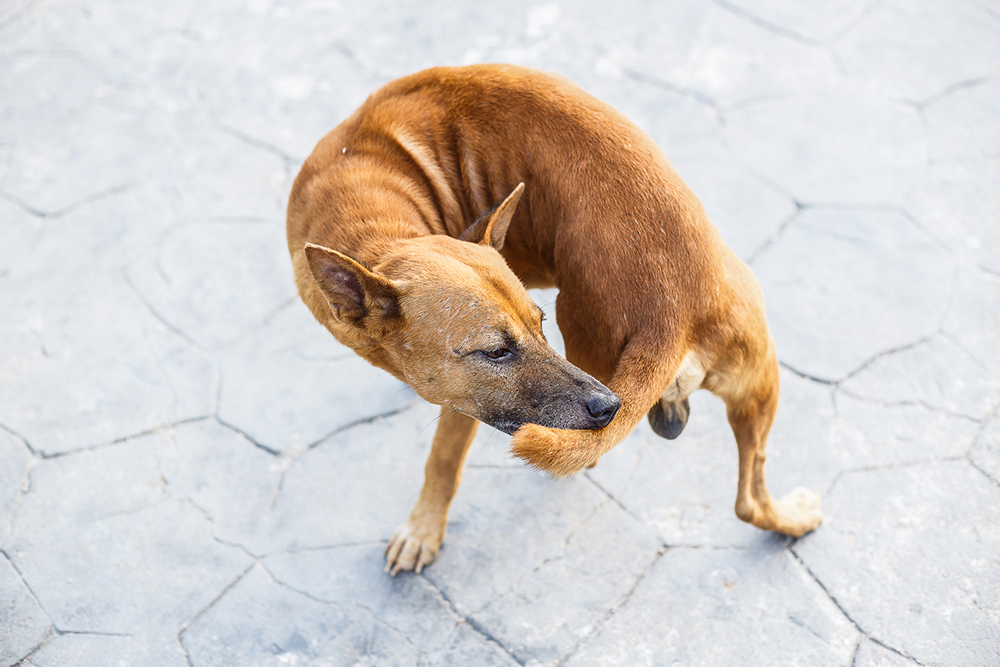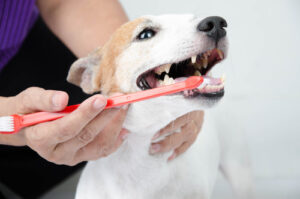Dog tail chewing: causes and solutions for this troublesome behavior
Tail wagging, tail chasing, and even tail tucking – as a dog owner, these are all behaviors you’re likely familiar with. However, if you’ve observed your canine companion repeatedly gnawing on their tail, you may be left feeling concerned and a little perplexed.
This blog will guide you through the enigma of dog tail chewing, helping you understand its potential causes and providing effective solutions.
The Enigma of Dog Tail Chewing
Every action of our four-legged friends carries a tale of their physical and mental well-being. Dogs express their happiness, excitement, and even stress through their tails. But when this expressiveness morphs into obsessive chewing, it’s a sign that something is amiss.
It’s important to remember that occasional nibbling at the tail can be a regular part of a dog’s grooming routine. However, if you notice your pet’s tail-chewing habit has become frequent or intense, it’s time to play detective and uncover what’s behind this troublesome behavior.
Potential Causes of Tail Chewing in Dogs
Dog tail chewing can result from a variety of factors, from simple boredom to more complex health issues. Here are the most common causes:
1. Parasites: Fleas, ticks, or mites can irritate your dog’s tail, leading to incessant chewing.
2. Allergies: Dogs can develop allergies to certain foods, environmental factors, or substances they come in contact with, which can cause itchiness and discomfort around the tail area.
3. Dermatological issues: Infections, dry skin, or dermatitis can all lead to tail chewing.
4. Behavioral issues: Stress, anxiety, or boredom can drive dogs to engage in repetitive behaviors like tail chewing as a coping mechanism.
5. Physical pain: If your dog has injured its tail or has an anal gland issue, chewing at the tail can be a response to pain or discomfort.
Effective Solutions for Dog Tail Chewing
Once you’ve identified potential triggers for your dog’s tail chewing, you can start implementing solutions. Here’s what you can do:
1. Parasite control: Regular flea and tick control treatments can keep these bothersome parasites at bay.
2. Allergy management: Identify potential allergens and eliminate them from your dog’s environment or diet. In some cases, antihistamines might be recommended by your vet.
3. Skincare: Regular grooming and use of moisturizing dog-safe lotions can help manage dry skin. For infections or dermatitis, your vet might prescribe medicated shampoos or creams.
4. Enrichment and stress management: Ensure your dog has plenty of physical exercise and mental stimulation to reduce boredom. For anxiety, consider dog-friendly calming techniques or products.
5. Pain management: If physical discomfort is the cause, you’ll need to address the root issue. This may involve vet-prescribed pain relief or specific treatments for conditions like anal gland issues.
When to Seek Professional Help from Pet Townsend Veterinary Clinic
While it’s essential to understand your pet’s behavior and take preliminary steps, professional intervention is critical when tail chewing persists or worsens.
If your dog’s tail-chewing behavior continues despite your efforts, it’s time to call the experts at Pet Townsend Veterinary Clinic at (360) 379-1133.
Our compassionate and experienced team will conduct a thorough examination to identify the root cause and recommend an effective, individualized treatment plan for your furry friend.
Remember, early intervention can prevent more serious health issues down the line.
If you’re concerned about your dog’s tail chewing, don’t hesitate to reach out.
Book an appointment today at https://pettownsendvet.com/ and let’s get your pet back to a happy, tail-wagging life.





